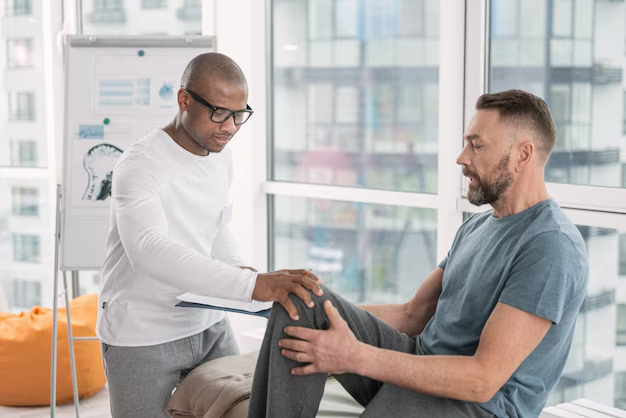Understanding the Connection: Can Parkinson's Disease Cause Pain?
When discussing Parkinson's disease, most people's minds gravitate to its more visible symptoms like tremors or stiffness in movement. However, a lesser-discussed yet significant aspect of this neurodegenerative disorder is the experience of pain. Recent studies indicate that pain is a common, yet understudied, symptom in Parkinson’s disease, affecting many individuals’ quality of life. But how exactly does Parkinson’s cause pain, and what can patients do to manage it? This comprehensive piece delves into these questions and offers practical insights into living with Parkinson's-associated pain.
Exploring Pain in Parkinson's: A Closer Look
The Complexity of Pain in Parkinson's
Pain in Parkinson’s disease can manifest in various forms, making it both challenging to diagnose and to treat effectively. Although not all patients with Parkinson's experience pain, for those who do, it can be a disabling symptom.
Types of Pain Experienced
Musculoskeletal Pain: Often resulting from muscle rigidity and postural changes, leading to discomfort primarily in the muscles and joints.
Neuropathic Pain: Occurs due to nerve damage or dysfunction, sometimes described as a sharp, electric-like pain.
Dystonia-related Pain: Associated with involuntary muscle contractions, often causing twisted postures.
Akathisia or Restlessness-related Pain: Characterized by an inner need to move, often making sufferers feel uncomfortable or uneasy.
Mechanisms Behind Parkinson’s Pain
The exact mechanisms causing pain in Parkinson's are complex and involve several factors:
Dopamine Depletion: The disease’s primary feature is dopamine deficiency, which disrupts the brain's pain-processing areas.
Central Sensitization: Parkinson’s may alter how the central nervous system processes pain signals, increasing sensitivity.
Peripheral Mechanisms: Changes in muscle function and stiffness contribute significantly to musculoskeletal pain.
Navigating Life with Parkinson’s-Related Pain
Identifying Triggers and Patterns
Understanding patterns and potential triggers can be crucial in managing pain associated with Parkinson’s disease. Patients are encouraged to maintain detailed pain diaries, noting:
- Time of day when pain intensifies
- Activities that may trigger pain
- Dietary or lifestyle factors impacting pain levels
Practical Pain Management Strategies
Living with pain can be burdensome, but several non-pharmacological methods might provide relief:
Physical Therapy: Specifically tailored exercises can improve muscle strength and flexibility, potentially alleviating musculoskeletal pain.
Mind-body Techniques: Practices such as yoga, tai chi, or meditation can promote relaxation and reduce pain perception.
Massage and Acupuncture: These therapies can offer temporary relief and enhance overall well-being.
It's essential to discuss these strategies with healthcare providers to ensure they complement standard treatment plans and are tailored to individual needs.
Beyond the Pain: Addressing Associated Challenges
Emotional and Psychological Impact
Living with chronic pain can have significant emotional repercussions, including increased anxiety and depression, both of which are prevalent in Parkinson’s patients.
Coping Mechanisms
Cognitive-Behavioral Therapy (CBT): This form of therapy can change negative thought patterns and promote healthier emotional responses to pain.
Support Groups: Connecting with others facing similar challenges can provide emotional relief and a sense of community.
Partnering with Healthcare Providers
Navigating the complexities of pain management necessitates a collaborative approach with healthcare providers. Essential steps include:
Regular Consultations: Ensuring consistent communication allows for the fine-tuning of treatment strategies and medications.
Medication Review: Regular assessment of medication efficacy and side effects ensures the best possible management.
Dispelling Myths and Misconceptions
Addressing Common Misunderstandings
There’s no shortage of myths surrounding Parkinson’s disease and pain:
Myth: Pain in Parkinson's is purely physical.
Fact: Pain is a multi-dimensional experience, influenced by physical, emotional, and psychological factors.
Myth: If the medication controls motor symptoms, it will also control pain.
Fact: Pain management often requires additional strategies beyond standard Parkinson's medication.
Charting the Path Forward
Emerging Research and Future Directions
The field of Parkinson's disease research is rapidly evolving, highlighting the importance of continued exploration into the mechanisms and management of pain associated with the disorder.
Key Areas of Research
Understanding Neural Changes: Further studies aim to understand better how Parkinson's affects pain pathways in the brain.
Developing New Therapies: Innovative treatments targeting the specific mechanisms of Parkinson’s-related pain are under investigation.
Encouragement for Patients and Caregivers
It's important to maintain hope and resilience when dealing with Parkinson's disease and its associated challenges. Staying informed and actively engaging in one's care can significantly improve quality of life.
Implementing Self-Care Practices:
Prioritize Rest: Adequate sleep and breaks can help manage fatigue and pain.
Create a Support Network: Leaning on family, friends, and healthcare professionals can ease the emotional burden.
🚀 Quick Tips & Takeaways:
- 💪 Manage Pain Actively: Explore various therapies: physical, psychological, and alternative.
- 📝 Keep a Diary: Track pain patterns to identify triggers and measure management success.
- 🗣️ Communicate: Openly discuss symptoms and treatment options with healthcare providers.
- 🌿 Explore Options: Consider non-pharmacological methods like yoga and acupuncture.
- 🤝 Build Connections: Join support groups for shared experiences and community support.
In conclusion, while pain is a complex and challenging symptom of Parkinson's disease, understanding its various forms and management strategies can empower patients and caregivers. Staying educated, involving healthcare teams, and utilizing available resources can make a significant difference in managing pain and enhancing the quality of life.

Related Articles
- Are There Environmental Causes Of Parkinsons
- Can Alcohol Cause Parkinson's
- Can Concussions Cause Parkinson's
- Can Females Get Parkinson Disease
- Can Head Trauma Cause Parkinson's
- Can Parkinson Disease Cause Dizziness
- Can Parkinson's Affect Eyesight
- Can Parkinson's Affect Memory
- Can Parkinson's Affect Speech
- Can Parkinson's Affect Vision